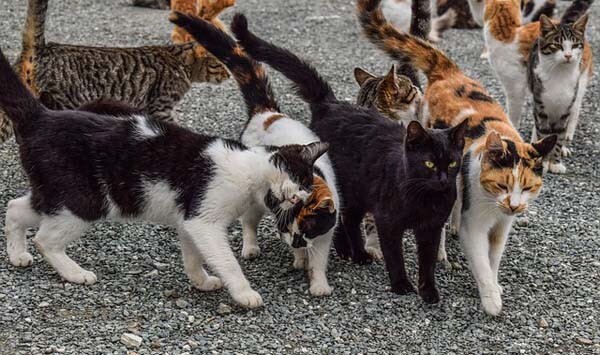Territory is a Big Deal to All Cat Species
Territory is important to all felid species. But, based on a number of factors, including gender, age and habitats, each species' view differs on the topic. To varying degrees, our companion cats, their feral cousins and wild cats will defend their territories. Some work it out and share their space and resources; other’s not so much.
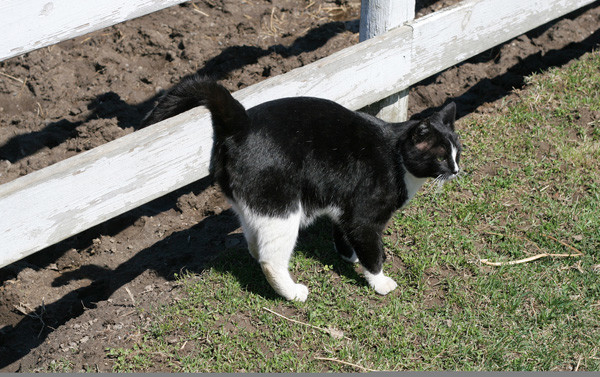
Intact male cat marking his territory by Shutterstock.
What are in cat territories that are worth fighting for?
Cat territories includes reliable sources of food, water, safe places to hang out and other coveted resources. Meals vary, depending on the species and what’s available. The mountain lions in my area prefer to dine on deer. Fine cuisine for feral cats may come from garbage dumps, feeding stations that are stocked daily by cat lovers and areas that are rich in small prey. Bobcats sup on small animals such as mice, rabbits, squirrels and other rodents. Sadly, larger wild felids sometimes view free roaming cats and dogs as appetizers. (Keep your cats and dogs safe by keeping them indoors!)
Intact felid males have different agendas than females. In a nut shell—they have three things on their minds; being safe, eating and reproducing. Not surprisingly, boy’s territories usually overlap the girls’ ranges. In addition to predictable food sources, females also need places where they can safely birth and care for their young.
Local mountain lion with her kittens Felidae Conservation Fund/Bay Area Puma
Project
Do wild felids cooperate with each other?
Most felids are solitary hunters and patrol their territories solo fashion. As a general rule, they also don’t hunt in packs. There are exceptions. African Lions live in prides—female lions cooperate with each other, hunting together and caring for cubs. Additionally, adolescent male brothers of some species, including cheetahs, lions and pumas often stick together after dispersing, cooperating to obtain food and hanging out together. These are the original bro-mances. Most separate after they are sexually mature to establish their own home territories.
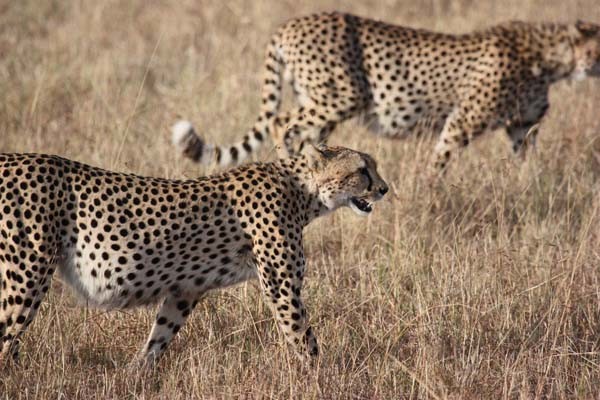
Two cheetah brothers by Pixabay
Do mountain lions share territory with each other?
Encounters between sexually mature males usually don’t go well and can end with one or both of the parties fatally injured. But it’s complicated. Studies, including a recent one conducted in Wyoming, showed that mountain lions will sometimes share their large kills with pumas they aren’t related to. And, here’s the cool part, they reciprocate—sharing meals with each other at different times. Keep in mind that this study covered a specific area in Wyoming and the results may not hold true elsewhere. Factors including other competitive predators, the abundance of food, terrain, effects of urbanization and shrinking ranges influence behavior. Although sharing may help up the survival rates in one area, it may be detrimental in another.
Female pumas handle territory differently than males. It’s not uncommon for daughters to disperse near their mum’s turf, overlapping their ranges. It depends on a number of conditions including the abundance of food, amount of available space, urban influences, terrain and the proximity of other predators, including pumas. Based on behaviors of other felid species, I’m going to go out on a limb and suggest that unrelated females aren’t welcomed. I haven’t found data that confirms or denies this.
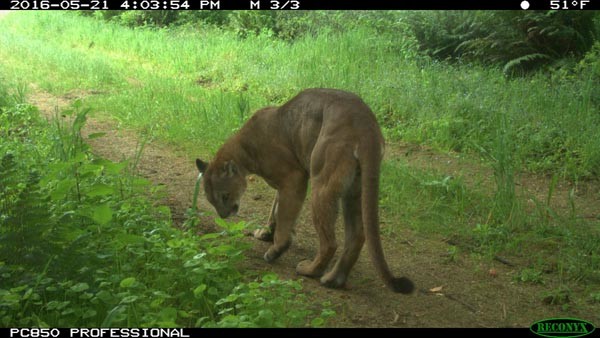
Mountain lion checking for scent by Felidae Conservation Fund/Bay Area Puma Project
How do feral cats view territory?
Feral cats have a different take on territory than pumas. Depending on availability of food, size of ranges, proximity of other ferals and additional factors, whole males commonly share resources with each other, but not at the same time. They may share the same food sources and hang out in the same areas without having face-to-face meetings. Although their ranges overlap, they’re usually adept at avoiding each other. They excel at time sharing. As expected, their territories typically overlap those of intact girls.
Intact females who are related are more gregarious with each other than the boys are. They form colonies that provide safety for the kittens and are located near reliable sources of food and cover. These matriarchal cat-communities are made up of mums, daughters, sisters, grandmothers, aunts, cousins and of course kittens. Everything revolves around the youngsters. There can be as many as 30 cats in a colony. The members recognize each other because they smell alike—they share a familial scent. The scent is distributed by allogrooming; mutually grooming each other. As a general rule, females who don’t carry the familiar familial scent aren’t welcomed.
Intact males who visit the colonies are usually not tolerated by the queens for good reasons. Toms sometimes will kill kittens that are sired by other males, bringing the queens back into estrus. Unless they’re in heat, girls don’t make a habit of hanging out with the boys. It’s different when they’re “ready”. Everyone in the neighborhood knows when queens are looking for boyfriends.
Is territory important to household cats?
Although, fixed, indoor cats living in multi-cat households are territorial, they have a multi-level approach to the subject. In addition to floor space, territory includes vertical areas such as high shelves, cat trees and architectural elements. Individuals usually claim certain spaces as their own, but they will typically time share—taking turns in prime, coveted areas. Vertical territory also helps keep the peace; allowing resident felines to show their positions in flexible feline hierarchies. Territory usually includes important resources such as litter boxes, food dishes and choice sleeping spots.
Many of our companion cats form close bonds with each other. They nap, play and hang out together in the same space. Others don’t tolerate any felines in their homes and will declare war on them at every opportunity. Scent is as big of a deal to household cats as it is to their feral cousins. Friends and family share the same familial scent which is distributed through allogrooming.
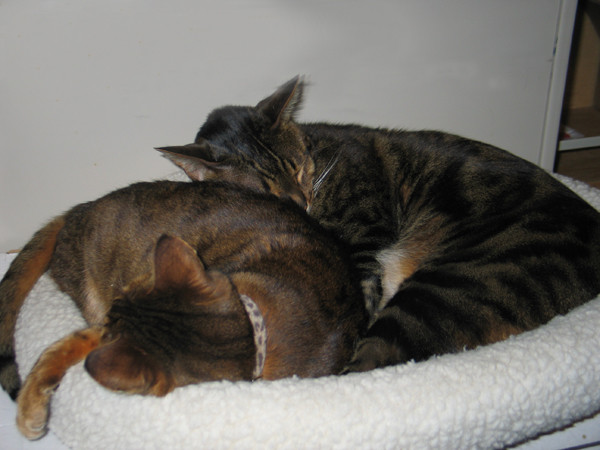
The authors cats cuddling by Marilyn Krieger, CCBC.
Territories rich with resources are worth defending. They up the odds of individual felids persevering, thriving and reproducing in a competitive and harsh world—ultimately helping the different species survive.
Please check out The Cat Coach on Facebook for lively discussions, studies and news about felids.

